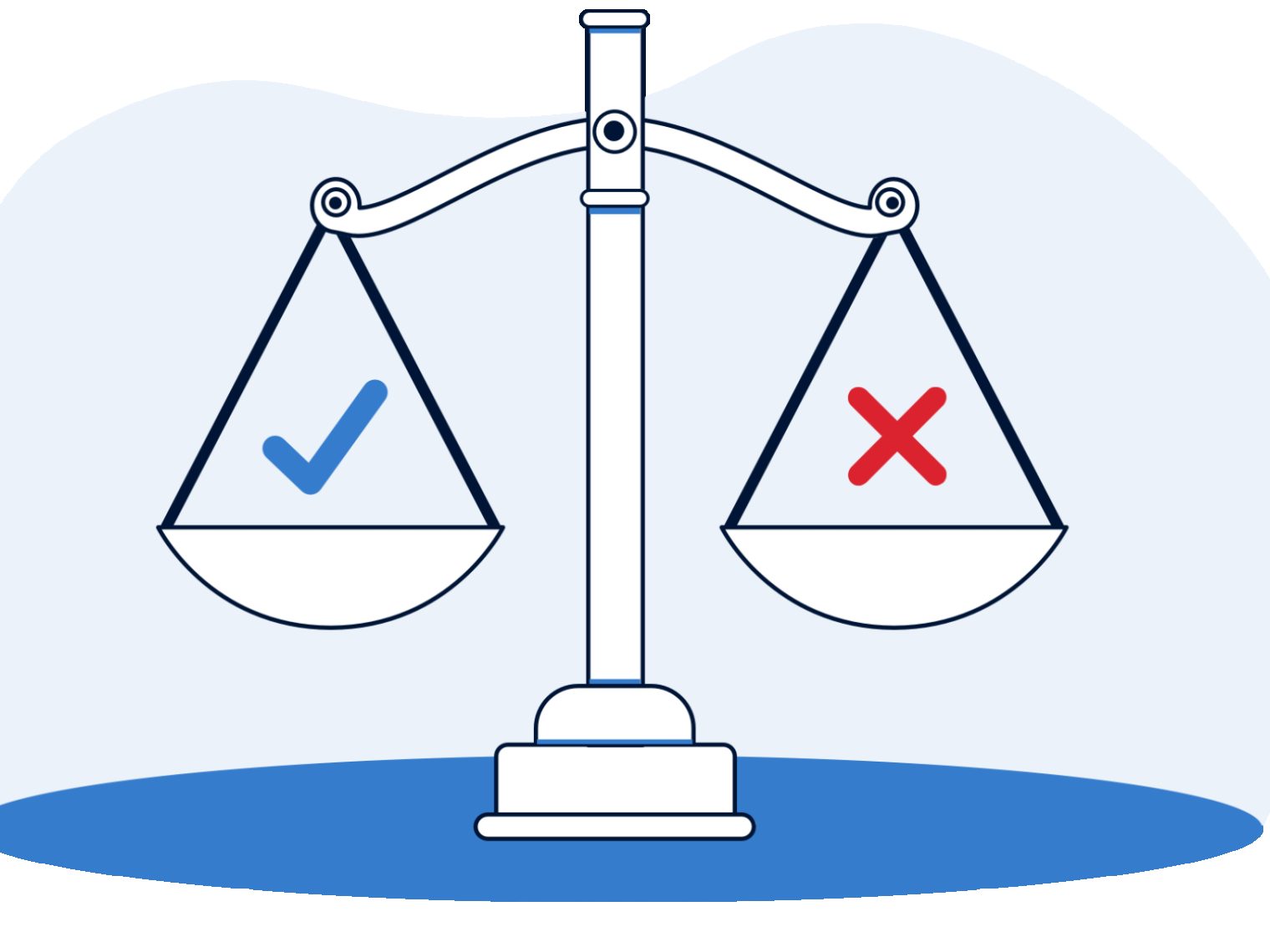It's easy to assume your mortgage payment is just a flat cost. However, VA mortgages have their payments broken into four parts: principal, interest, taxes, and insurance (PITI).
It's easy for VA buyers to think of their monthly mortgage payment as one flat bill to take care of every month. But your mortgage payment is really the sum of a handful of expenses related to buying and owning a home.
Typically, your mortgage payment is made up of four distinct pieces:
- Principal: You repay a portion of what you borrowed each month. This is known as your principal balance, or principal for short.
- Interest: It costs money to borrow money, so a portion of your payment covers interest charges on the loan.
- Property taxes: As a service to borrowers, VA lenders will often collect a portion of your annual property tax bill each month. The lender or mortgage servicer puts these funds into an escrow account and pays the bill on your behalf when it comes due.
- Homeowners insurance: Mortgage lenders will require borrowers to have adequate insurance on the property. Like with property taxes, lenders will escrow a portion of your annual homeowners insurance premium each month and make sure the bill gets paid when it's due.
What is a PITI Payment?
Homebuyers will often see these four costs described as PITI (principal, interest, taxes, insurance). Essentially, you're paying one bill each month, with funds distributed two different ways:
- One chunk for principal and interest
- One for your monthly escrows for taxes and insurance
VA buyers who choose a fixed-rate mortgage lock in the principal and interest portions of their payment for the life of the loan. But it's critically important for borrowers to understand that the last two parts of their mortgage payment, property taxes and homeowners insurance, can change every year.
That means your monthly mortgage payment can increase or decrease every year, even if you have a fixed interest rate.
Answer a few questions below to speak with a specialist about what your military service has earned you.
Principal and Interest Payments on VA Loans
VA buyers with a fixed interest rate will pay the same amount toward principal and interest each month for the duration of the loan. But the relationship between these two figures changes over time.
When you first start repaying your loan, the interest portion represents the bulk of your overall principal and interest payment. As the years go on, you slowly begin to pay more toward the principal loan balance. They'll typically even out about halfway through your mortgage term. After that point, more of your payment will go toward paying down the principal rather than paying interest to the lender or servicer.
For example, let's look at a 30-year, $250,000 mortgage with a fixed 4.5 percent interest rate. The monthly principal and interest payment on this loan would be $1,266.
Using an amortization calculator, you can get a look at the principal and interest payments for all 360 months of this loan term.
The first year's worth of principal and interest payments look like this:
| Month | Payment Toward Principal | Payment Toward Interest |
|---|---|---|
| 1 | $329.21 | $937.50 |
| 2 | $330.44 | $936.27 |
| 3 | $331.68 | $935.03 |
| 4 | $332.93 | $933.78 |
| 5 | $334.18 | $932.53 |
| 6 | $335.43 | $931.28 |
| 7 | $336.69 | $930.02 |
| 8 | $337.95 | $928.76 |
| 9 | $339.22 | $927.49 |
| 10 | $340.49 | $926.22 |
| 11 | $341.77 | $924.94 |
| 12 | $343.05 | $923.66 |
As you see, in the early going, the bulk of your mortgage payment will pay interest on the loan.
Now, let's look at the monthly principal and interest payments as you near the 15-year mark on the mortgage:
| Month | Payment Toward Principal | Payment Toward Interest |
|---|---|---|
| 169 | $617.40 | $649.31 |
| 170 | $619.72 | $646.99 |
| 171 | $622.04 | $644.67 |
| 172 | $624.37 | $642.34 |
| 173 | $626.71 | $640 |
| 174 | $629.06 | $637.65 |
| 175 | $631.42 | $635.29 |
| 176 | $633.79 | $632.92 |
| 177 | $636.17 | $630.54 |
| 178 | $638.55 | $628.16 |
| 179 | $640.95 | $625.76 |
| 180 | $643.35 | $623.36 |
For this borrower, mortgage payment No. 176 represents the first time they're paying more toward their principal loan balance than interest.
Remember, while these numbers slowly shift over time, the total you owe for principal and interest doesn't change on a fixed-rate loan. Even in month No. 180, this example borrower is still paying $1,266 per month for the principal and interest portions of their mortgage payment.
The monthly principal and interest costs can change for Veterans with adjustable-rate mortgages because the interest rate is variable after a certain number of months or years.
Some VA homeowners choose to cut down on the interest they repay by making additional payments each month or year toward their principal loan balance. Homeowners may be able to use biweekly mortgage payments through their lender or servicer or simply earmark extra money every year for this speedier repayment.
Prospective VA buyers need to understand that your mortgage payment's principal and interest portions are the only costs your mortgage lender can control. Lenders cannot influence or lower your real estate property taxes or your homeowners insurance costs.
Property Taxes and Homeowners Insurance
Real estate property taxes usually help fund schools, libraries, police and fire departments and other public services. Property tax rates can vary depending on where you're buying, the value of your home and more.
In some states, the average property tax bill might be under $1,000 per year. Homeowners in more expensive parts of the country might pay $5,000 or more annually.
Property taxes are public records, which means would-be VA buyers can see what a home seller paid in the previous tax year. But there are no guarantees when it comes to property tax rates. Taxing authorities can raise or lower tax rates every year.
Some states provide property tax exemptions for disabled Veterans and other VA homeowners. Check with your state and local Veteran offices for more information.
Mortgage lenders will require you to have adequate homeowners insurance on the property, too. You might also hear this called "hazard insurance." Guidelines and policies for what's required can vary, but lenders will want to make sure their collateral is protected.
Homeowners insurance premiums can depend on the home's value, where in the country you're buying, the deductible amount and more. Some buyers may need separate insurance policies that cover flooding or damage from wind and hail.
VA buyers can shop around for the best deal on homeowners insurance. But understand that premiums can go up or down every year, even if you haven't filed an insurance claim.
When it comes to your mortgage payment, lenders and servicers will estimate your annual costs for property taxes and homeowners insurance. They'll generally take that total and divide by 12 to determine how much you need to escrow each month.
For example, if your annual property tax bill is $2,500 and your annual homeowners insurance premium is $1,100, your monthly escrow payment would be $300 ($3,600 / 12). If we use the same $250,000 loan example from above and factor in these hypothetical costs, this borrower's monthly mortgage payment would look like this:
$1,266 for principal (P) and interest (I) + $300 for taxes (T) and insurance (I)
= $1,566 monthly mortgage payment
Remember, you're not making separate payments every month to cover your PITI. There's just one single mortgage payment. The lender or servicer takes out and holds onto the portions for your taxes and insurance and pays those bills for you.
Escrows and Mortgage Payments Can Change
Lenders and servicers track homeowners insurance and tax bill due dates and work hard to estimate your annual escrow needs accurately. What can be challenging for homeowners is that property tax and homeowners insurance costs can change every year, sometimes dramatically.
Lenders know this, too, and so at least once a year, they'll review your escrow history to help ensure you're on track. If your property taxes or homeowners insurance premiums increase, you're likely to see your monthly escrow amounts increase, too. Conversely, if they decrease, you might get money back.
Again, these are costs outside of a lender's control. Homeowners can certainly shop around for a new and cheaper homeowners insurance policy. There are also avenues to appeal a property tax bill. But your lender or servicer can't intervene or, in any way, change those costs.
For VA homebuyers, the broad takeaway is that even with a fixed-rate loan, your monthly mortgage payment may change over time. But this isn't something your lender or mortgage servicer can control. It's just part of the nature of property taxes and insurance costs.
Answer a few questions below to speak with a specialist about what your military service has earned you.
Related Posts
-
 VA Renovation Loans for Home ImprovementVA rehab and renovation loans are the VA's answer to an aging housing market in the United States. Here we dive into this unique loan type and the potential downsides accompanying them.
VA Renovation Loans for Home ImprovementVA rehab and renovation loans are the VA's answer to an aging housing market in the United States. Here we dive into this unique loan type and the potential downsides accompanying them. -
 Pros and Cons of VA LoansAs with any mortgage option, VA loans have pros and cons that you should be aware of before making a final decision. So let's take a closer look.
Pros and Cons of VA LoansAs with any mortgage option, VA loans have pros and cons that you should be aware of before making a final decision. So let's take a closer look.


